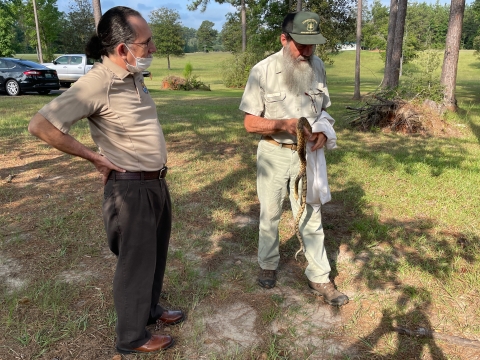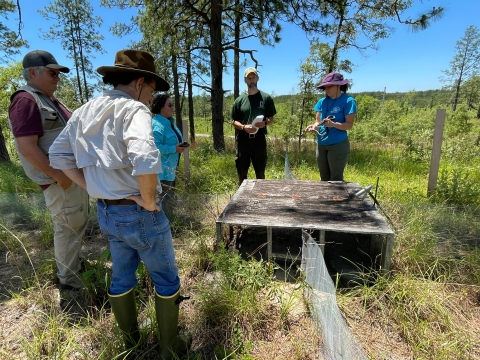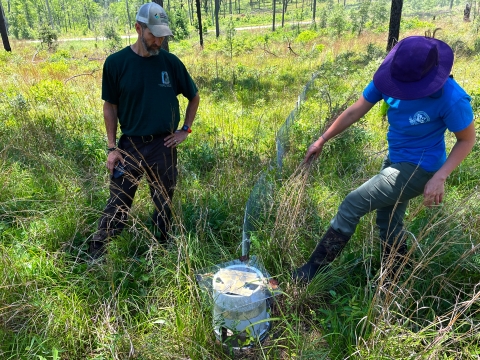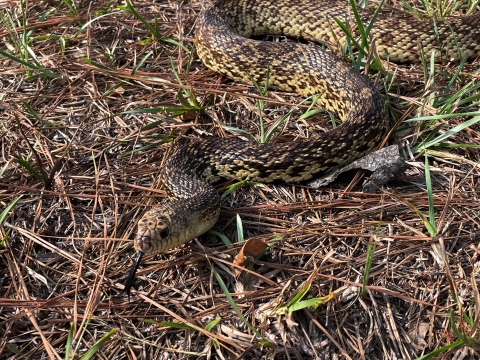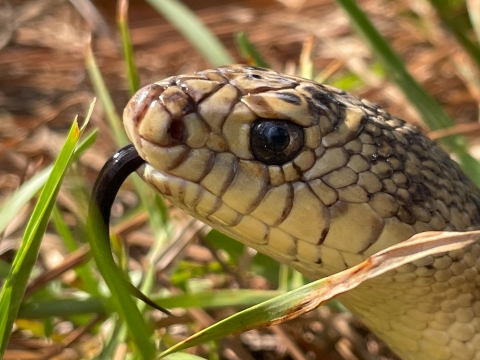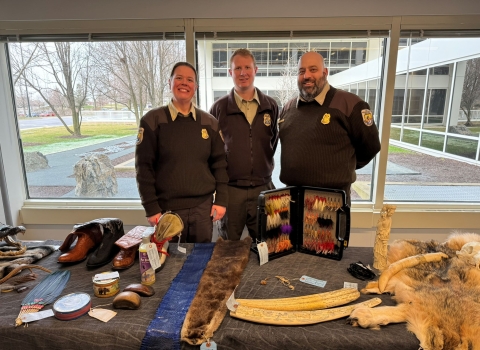Conserving an elusive species like the threatened Louisiana pinesnake, which spends most of its time underground, poses a challenge for biologists. But just how elusive is it?
“That’s just such a chancy thing for person just to say hey I’m going to go to Bienville Parish and I’m going to drive the roads and I’m going to find me a pinesnake,” said U.S. Forest Service Wildlife Biologist Steve Shively of the Calcasieu Ranger District, Kisatchie National Forest. “Chances are you’re not.”
To overcome this challenge, biologists have since innovated to collect data on this species.
Box traps have been used for decades. They use drift fences to direct the snakes into an enclosure. However, they must be checked regularly for safety, and the snakes shy away from being trapped. It takes multiple box traps set for hundreds of days to catch one pinesnake.
“It’s an extremely hit or miss kind of thing.” said Shively
Camera traps use the drift fences to direct the snakes through a bucket that has holes on two sides and a camera on top. As the snake passes through the bucket, the camera automatically takes a picture of the snake.
Snakes seem to not try to evade the camera traps like they do the box traps. Plus, the snake’s markings are unique enough to tell them apart.
“We’re pretty excited about that,” said U.S Fish and Wildlife David Castellanos of the Louisiana Ecological Services Field Office. “Some areas they had box traps in Bienville, they put out camera traps and they found more snakes in the same spot as the box traps.”
The snake inhabits the well-drained, sandy soiled pine forests in east Texas and west Louisiana; especially long-leaf pine savannah with a presence of Baird’s pocket gophers. The snake relies on the pocket gopher as a food source, and it uses their burrows.
By the 1930’s, people had reduced and severely fragmented the snake’s habitat leading to the decline in their population.
In addition to problems associated with reduced and fragmented habitat such as reduced availability of food and mates, some Baird’s pocket gophers likely began inhabiting roadsides. This may have increased the pinesnake’s chances of being struck by traffic.
“If they’re moving to the roadsides and the pinesnakes are in the area, they’re following the pocket gopher to the roadside,” said Shively. “The snakes aren’t going to last long.”
According to Castellanos, many federal, State, zoos, and private groups were already working in different ways to save the Louisiana pinesnake before it was listed. However, the Endangered Species Act has helped unify the Service and its partner’s efforts through organization and funding.
Reintroductions of the Louisiana pinesnake, which began with efforts from zoos and the U.S. Forest Service, have benefited from this coordination. Almost 300 have been released to date.
The Louisiana pinesnake is a non-venomous constrictor. When it is in a tunnel, it will squeeze the Baird’s pocket gopher against the wall which is a specialized behavior.
“It’s a cool snake I know Steve would attest to that,” said Castellanos. “Pretty much all of us who have worked around it are impressed and think it’s a really neat animal.”
The Service listed the Louisiana pinesnake as threatened under the Endangered Species Act on April 6, 2018, and published a species-specific 4(d) rule on February 27, 2020. Interfering with the species in most cases is now illegal.

